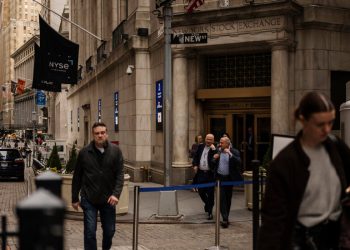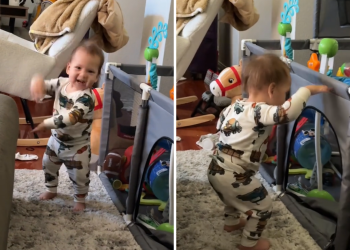The conventional wisdom holds that the Super Bowl is the most lucrative sporting event in the world, generating as much as $1 billion in revenue. Aside from the game itself, the halftime show performance, which features major music icons, has long been a main draw for viewers. This year’s show — sponsored by Apple Music, produced by Roc Nation and Diversified Production Services, and featuring rapper Kendrick Lamar — will be no exception.
Advertisers will reportedly spend $7 million on average for a 30-second spot in Super Bowl LIX, reaping a huge windfall for Fox. With millions more viewers tuning in for halftime than the game itself in recent years, that cost can be expected to be higher for advertisers who want the slots during the break.
Not everyone, however, is cleaning up on the halftime entertainment.
The workers tasked with setting up and breaking down the large, elaborate stages and displays on the field for the roughly 15-minute performance hardly get to cash in. For this year’s halftime show, field crew workers are set to make as little as $12 per hour during rehearsals and during Super Bowl LIX itself, according to an online job listing. The job stretches across eight days and includes about 48 hours of work.
The role requires workers to be able to “push, pull, bend and lift” heavy objects, up to 50 pounds in weight, according to the listing. Workers will be “moving and assembling the large rolling stage carts and other scenic elements on and off the field” for the show, which typically costs $10-15 million to produce. The crews are not given a ticket to watch the game.
Cities often compete with each other to host the Super Bowl, chasing the NFL’s promise that the annual event will inject millions in revenue into the local economy. But the benefits often fall short of projections.
“The reality is we see these jobs, whether it’s working the halftime show, whether it’s working in a concession stand, or even the restaurant work that is getting extra hours because the Super Bowl is coming — these aren’t high-paying jobs,” said Michael Edwards, a professor at North Carolina State University who researches the ethics and social responsibility of sports and sporting events. “These are all service industry event-type gig jobs that are going to be low-paying with no benefits at all.”
Roc Nation, Diversified Production Services, and the NFL did not immediately respond to The Intercept’s requests for comment. The listed email address on the Super Bowl Productions website, which posted the gig, also did not immediately respond to request for comment.
While there may be short-term gains for some workers and businesses, research shows that the overall revenue share for local taxpayers is about a quarter of what is promised. That income is a fraction compared to what the NFL makes from ticket and merchandise sales and broadcasting deals, 100 percent of which the league pockets.
“Most of the economic impact of the Super Bowl is realized by corporations and leaks out of the local economy.”
The $12-per-hour wages are compliant with labor laws in Louisiana, which lacks a state minimum wage and follows the federal minimum wage of $7.25. Even so, estimates show that fast-food workers on average make more at $18 an hour, with the lower end of the average range at about $13 an hour. Food workers and labor advocates have been pushing for nearly a decade to raise the state’s minimum wage to $15 an hour, with many low-wage workers unable to pay for health care, utilities, and bills.
“There is always this vague, but highlighted, statement about X number of jobs created by hosting the Super Bowl,” Edwards said. “Most of the economic impact of the Super Bowl is realized by corporations and leaks out of the local economy. What actually ends up in the pockets of local residents is typically much less.”
History of Labor Issues
The Super Bowl, and the halftime show in particular, has been notorious for labor exploitation, from low pay to allegations of wage theft and unpaid work. The NFL regularly leans on unpaid, volunteer work during the Super Bowl.
Ahead of this year’s game, the league is actively recruiting unpaid volunteer “ambassadors.” The unpaid workers are expected to assist visitors at airports, hotels, and NFL-sanctioned events, working three four-hour shifts leading up to the game.
In 2016, for the Super Bowl 50 halftime show in the San Francisco Bay Area, production managers recruited volunteers for the field crew work with no pay. The arrangement was a potential violation of California’s labor laws, which limit the use of volunteer work for commercial events. However, after a local news report by a Bay Area ABC affiliate station aired, the NFL said it would pay its crew of around 500 field workers.
Several years later in 2021, however, at the Super Bowl in Tampa, Florida, production teams hired by the NFL were recruiting unpaid volunteers to perform as a part of the halftime show, according to old listings for the event.
“The Super Bowl or the NFL isn’t any different than any other corporation.”
The halftime show for the Super Bowl in 2022, held in the Los Angeles area, also drew controversy for offering unpaid roles for dancers, recruiting them for 72 hours of unpaid rehearsal time, as well as the performance. The NFL eventually agreed to pay dancers $15 per hour, which still disappointed dance and labor advocates.
Pay for the 500 field crew workers for the performance, sponsored by Pepsi, was also $15 per hour, which at the time was minimum wage for California.
Concession workers at last year’s Super Bowl in Las Vegas made as little as $14.25 per hour — slightly more than Nevada’s minimum wage, but less than the $18 beers they were serving. And after the 2019 Super Bowl in Atlanta, 200 workers, hired by a firm authorized by the NFL, worked 72 hours, including 14-hour days, but did not receive pay.
“The Super Bowl or the NFL isn’t any different than any other corporation in the U.S. or the world: There’s always an equity issue,” Edwards said. “There’s always an argument that could be made that the owners should share more profits with labor.”
He pointed out that players have been able to bargain for higher paying contracts through its powerful union, the NFL Players Association, but that hasn’t trickled down to the front-line workers in the NFL.
He said, “The front-line staff are always going to be paid as low as, in some cases, management can get away with.”
“Built to Host” New Orleans?
As it vied to host the Super Bowl, New Orleans marketed itself as the “Built to Host” city, with robust tourism infrastructure already in place. That capacity has brought the big game to the Crescent City 10 times in the past.
Hosting the Super Bowl this year has not been without controversy. The city is already facing blowback for its enforcement of the NFL’s “clean zones,” which restrict portions of downtown New Orleans near the Superdome from unauthorized advertising and commercial activities. Such policies shut out street vendors from cashing in on the event — in a city with a rich tradition of selling everything from drinks to tunes right on the sidewalk.
Violating the policy can carry a fine of up to $500. Similar regulations have spawned lawsuits from small businesses and an environmental activist who was arrested for tabling in one of the “clean zones.”
Policing and surveillance of street vendors is common in Super Bowl events, including in 2022 near Los Angeles, when the NFL called on the Department of Homeland Security and Immigration and Customs Enforcement to crack down on unlicensed vendors, who are often immigrants and sometimes undocumented.
Such heavy-handed enforcement should spur more careful debate within communities who are considering the chance to host the Super Bowl, said Edwards.
“Certainly there’s a certain prestige, there may be a certain kind of exposure of hosting a Super Bowl, and what it means to some communities, as well as any mega-sporting event,” he said. “But the reality is, there’s a lot of costs, there’s a lot of negative impacts whether it’s environmental, whether it’s human rights impacts, whether it’s social impacts. And I think, from a public’s perspective, understanding all those costs and understanding all the ways in which there could be negative impacts don’t get enough coverage in the conversation.”
He also listed other human rights and labor issues surrounding other global sporting events, such as the Olympics or the FIFA World Cup. Major stadium construction projects have fueled displacement and gentrification of communities, as well as worker exploitation and slave labor in the case of Qatar leading up to the 2022 World Cup.
“When communities are thinking about: Do we want to host? Do we want to publicly finance a stadium to get a Super Bowl? Do we want to invest in this infrastructure cost for hosting the Olympics, the FIFA World Cup?” Edwards said. “If we’re not going to generate the types of economic impacts they’re claiming, what are the benefits? How do we ensure those benefits are equitably distributed among the population?”




















